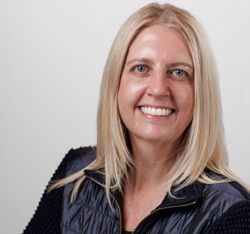Rare Diseases
Solving common challenges in rare disease trials
Ruthie Davi and Elizabeth Lamont at Medidata AI discuss how adopting different approaches, such as synthetic control arms and remote monitoring, can aid researchers in investigating rare diseases

With over 6,000 different rare diseases, each with a low prevalence, treatment options for patients can be incredibly limited. This leaves a large gap for clinical research to fill to develop novel therapeutics that can improve the quality of life of people living with rare diseases and those who care for them.
Small patient pools, big hurdles
To bring novel treatments to patients, their safety and efficacy must first be tested in clinical trials. In rare disease trials, meeting patient enrolment targets can often be challenging given the small patient populations. Alongside the challenge of finding a sufficient number of participants for a clinical trial, it can be difficult for researchers to draw conclusions from studies with a small number of patients.
In the case of randomised controlled trials, the possibility of receiving a placebo treatment can often discourage people living with a rare disease from participating in such clinical research. Often, rare disease patients want to participate in a clinical trial due to the inadequacy of current standard-of-care treatments, and their desire to try something different. Therefore, the prospect of participating in a trial and receiving the same treatment that they would have received in clinical practice can be a significant deterrent, particularly when coupled with the burden of travelling to a trial site far from home.
There are also ethical questions that arise from trials where many patients will be assigned to an ineffective standard-of-care therapy in lieu of a potentially life-changing treatment.
Synthetic control arms: balancing patient-centricity and trial integrity
Synthetic control arms (SCAs) effectively address these challenges by using historical patient-level data to develop a comparator arm. This can reduce the number of patients receiving a placebo or, in some cases, eliminate the need for a control arm entirely. More patients could receive a potentially transformative treatment, without compromising the scientific integrity of the study, while improving the patient-centricity of the trial.
The main challenge with using SCAs is finding the appropriate data from the appropriate patient population to ensure that the comparator arm being created is as similar as possible to the patients in the investigational arm.
This can be particularly difficult in rare indications, given the volume and quantity of historical trial data that is required when using SCAs.
It is also important to find sponsors that are willing to use this innovative SCA approach. In an industry that is rightfully conservative, as patient lives are at stake, companies have to be willing to take a risk and try something new. Then, once the right data and sponsor have been found, there is also the need to convince regulators that the use of an SCA is the most appropriate option for a particular trial. Having high-quality data makes it much easier to underscore the value of using an SCA to regulators and sponsors.
“ The main challenge with using SCAs is finding the appropriate data from the appropriate patient population to ensure that the comparator arm being created is as similar as possible to the patients in the investigational arm ”
The power of decentralisation
Decentralisation tools are also particularly beneficial for reducing the burden on patients participating in rare disease trials. Given patient populations for rare indications are small, they are typically spread over a large geographical location.
As such, participating in a trial can bring a significant time and cost burden for patients, who may have to travel long distances to trial sites. Using decentralised technology such as wearables and remote monitoring may enable significantly more patients to participate in trials, helping to speed up recruitment and therefore reduce trial timelines.
Looking ahead, it is vital that the industry continues to embrace new technologies to improve outcomes for people living with rare diseases, particularly those with a current high unmet need.
While innovation brings inherent risk and therefore some hesitation, there has been considerable interest from the pharma industry to integrate these solutions into the clinical trials life cycle to bring new treatments to patients as quickly and efficiently as possible, without compromising on safety and efficacy.

Ruthie Davi is a statistician and vice president of data science at Medidata AI. She has a background in pharmaceutical clinical trials, with more than 20 years working as a statistical reviewer, team leader and deputy division director in the Office of Biostatistics in the Center for Drug Evaluation and Research at the US Food and Drug Administration. At Medidata AI, Davi is part of a team creating analytical tools to improve the efficiency and rigour of clinical trials, an example of which is the synthetic control work. Davi holds a PhD in Biostatistics from George Washington University, US.

Elizabeth Lamont MD, MS, MMSc is a physician scientist and VP of clinical development at Medidata AI. Dr Lamont is a recognised leader in research at the interface of clinical medicine, clinical trials and technology. After earning her medical degree from the Geisel School of Medicine at Dartmouth, US, and training in internal medicine at the Brigham and Women’s Hospital, she went on to pursue dual fellowships in Medical Oncology and Health Services research at the University of Chicago, US, where she was a Robert Wood Johnson Clinical Scholar under Dr Nicholas Christakis. She earned an MSc in Health Studies from the University of Chicago and later an MMSc in Bioinformatics from Harvard Medical School, US. Prior to joining Medidata AI, Dr Lamont was an associate professor of Medicine and Health Care Policy at Harvard Medical School/Massachusetts General Hospital. Immediately prior to joining Medidata AI, she was senior medical director for research at COTA.